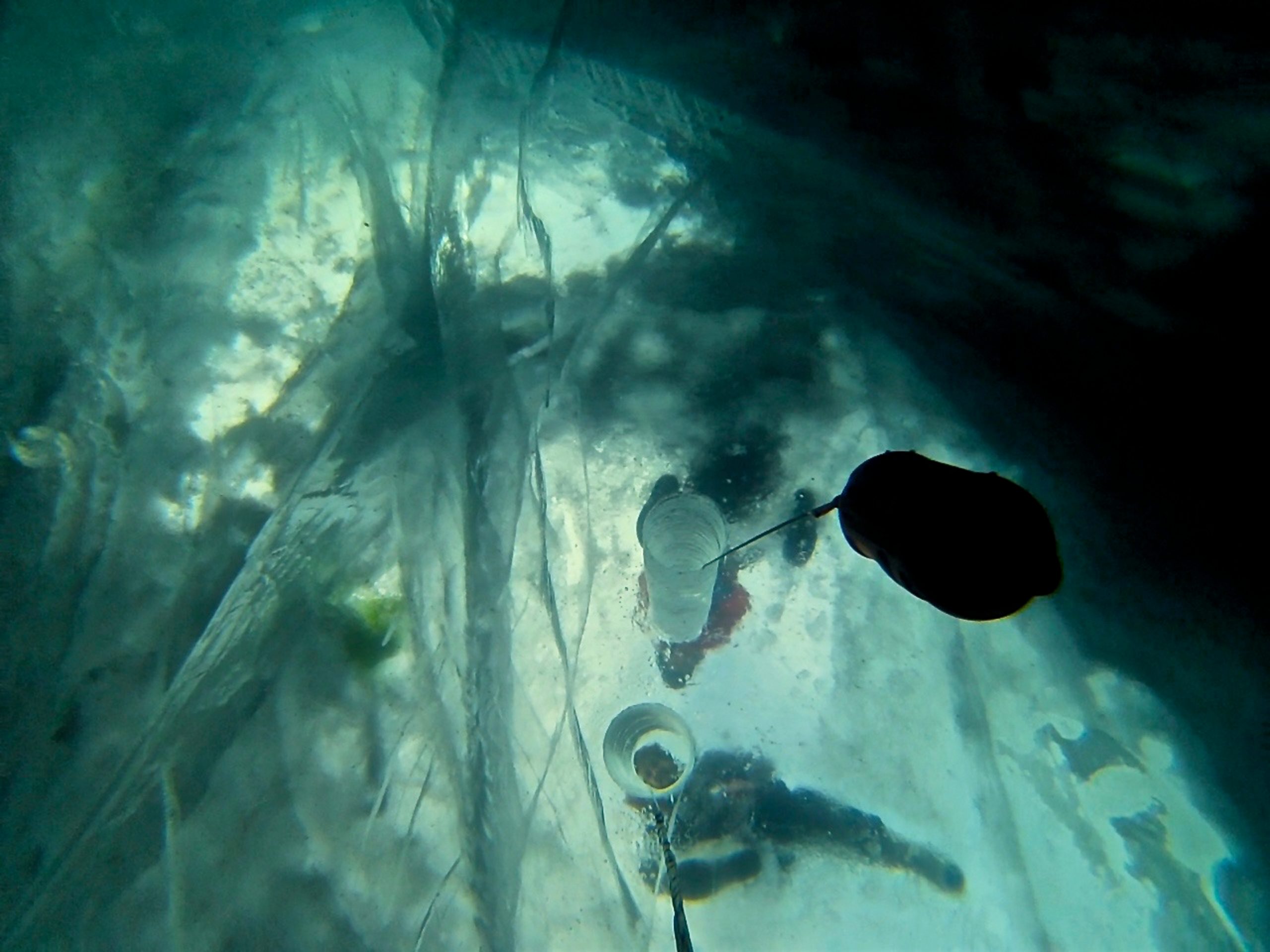Under the Ice
| Submitted by: | Ellorie McKnight |
| Faculty/Department | Biological Sciences |
| Place of creation: | Kluane Lake, Yukon, Canada |
Climate change is amplified in northern latitudes and has significant impacts on permafrost, glaciers, and vegetation dynamics. Rising air temperatures and more variable precipitation patterns will also have effects on the hydrological cycle. However, some of these effects are not well understood. The effects of climate change on large northern lakes is of particular interest because very small physical, biological, and chemical changes in these lakes can lead to significant ecological shifts. For example, rising water temperatures could cause a decrease in suitable habitat for important species such as lake trout. The image shows a Castaway CTD device (which measures depth, water temperature, and conductivity) being deployed in February 2015 under ice in Kluane Lake (the largest lake in the Yukon). After completing a baseline study of physical, chemical, and biological lake water properties in 2015, we are now working towards developing a longterm monitoring program for Kluane as a first step towards identifying any changing trends in these properties. Such knowledge will improve our understanding of how climate change is affecting large northern lakes & aquatic species’ habitat, providing key information for effective management and policy-making.


